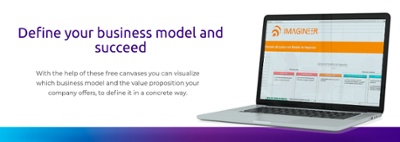When to use Value Proposition Canvas
If you have ever googled "business model", "value proposition" or similar terms, you will have come across Strategyzer. Strategyzer is a strategy and...
There is a saying that we are all equal in the eyes of God; but not all business models are. The 10 Types of Innovation framework is an effort by Deloitte. This framework helps us understand that winning business models are grounded in the mix of different business patterns. The foregoing motivates us to understand that a good value proposition is not only based on creating products or services, since as such they are not a source of disruption, otherwise business models. The 10 types of innovation are at the business model level and require the will to experiment with them.

The model is based on the fact that the closer you are to the center, the easier it is for your competence to copy you. On the other hand, the further you move away from the center and innovate in these dimensions, the greater the shielding against imitation. To be able to experiment in each dimension, learn about the different patterns of the business model.
Some examples per block are:
The framework of the 10 types of innovation should be a wake-up call that true innovation and disruption happens beyond product and / or service innovation. And that business model innovation is an iterative process where models from other industries are adjusted and how it fits yours. This framework alone is difficult to explain so I invite you to use it as a complement to the Canvas Business Model.


If you have ever googled "business model", "value proposition" or similar terms, you will have come across Strategyzer. Strategyzer is a strategy and...

The e-Commerce Business to Business (B2B) model as its name says is the process of buying and selling products/services between companies. Based on...

Through the automation of assembly lines, in 1913, Henry Ford reduced the manufacturing time of an automobile from 12 hours to 1.5 hours; this...